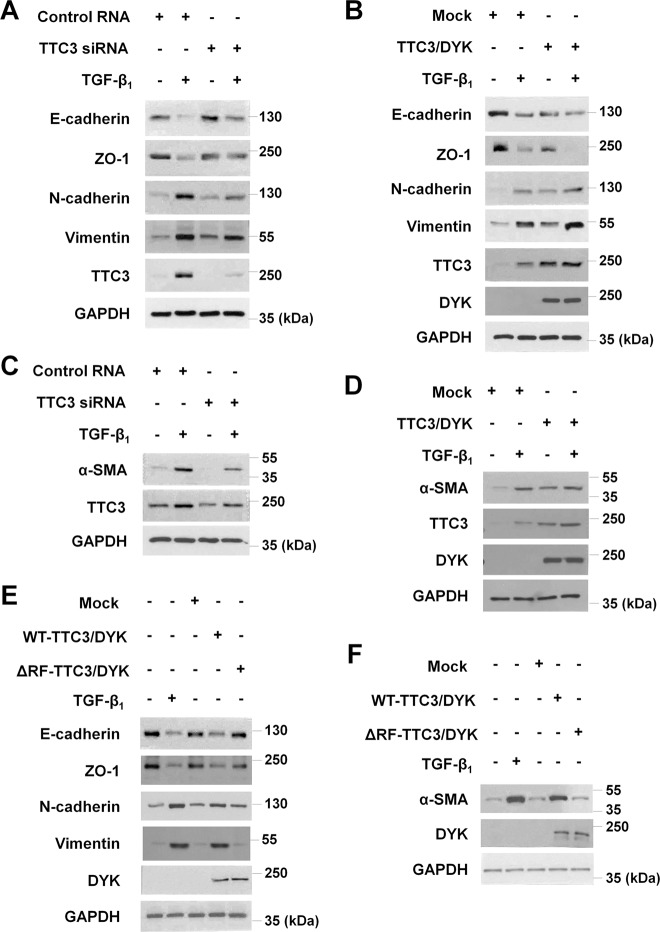Fig. 1. Tetratricopeptide repeat domain 3 (TTC3) positively regulates transforming growth factor-β1 (TGF-β1)-induced epithelial−mesenchymal transition (EMT) and myofibroblast differentiation in human bronchial epithelial cells (BEAS-2B) and normal human lung fibroblasts (NHLFs), respectively.
Effects of TTC3 knockdown (a) and TTC3 overexpression (b) upon TGF-β1-induced EMT in BEAS-2B cells. One day after the transfection of TTC3 siRNA (a) and TTC3/DYK plasmid (b), BEAS-2B cells were treated with 10 ng/ml TGF-β1 for 1 d in the absence of serum. Effects of TTC3 knockdown (c) and TTC3 overexpression (d) upon TGF-β1-induced myofibroblast differentiation in NHLFs. TTC3 knockdown (c) and overexpression (d) and TGF-β1 treatment in NHLFs were performed as in BEAS-2B cells. Requirement of the TTC3 RING domain in the induction of EMT (e) and myofibroblast differentiation (f). BEAS-2B cells (e) and NHLFs (f) were transfected with mock, wild-type TTC3 (WT-TTC3/DYK), and TTC3 mutant (RING domain-deleted; 1956Cys to 1997Gln, ΔRF-TTC3/DYK) plasmids, and harvested 2 d after transfection. For comparison, BEAS-2B cells and NHLFs were treated with 10 ng/ml TGF-β1 for 1 d

